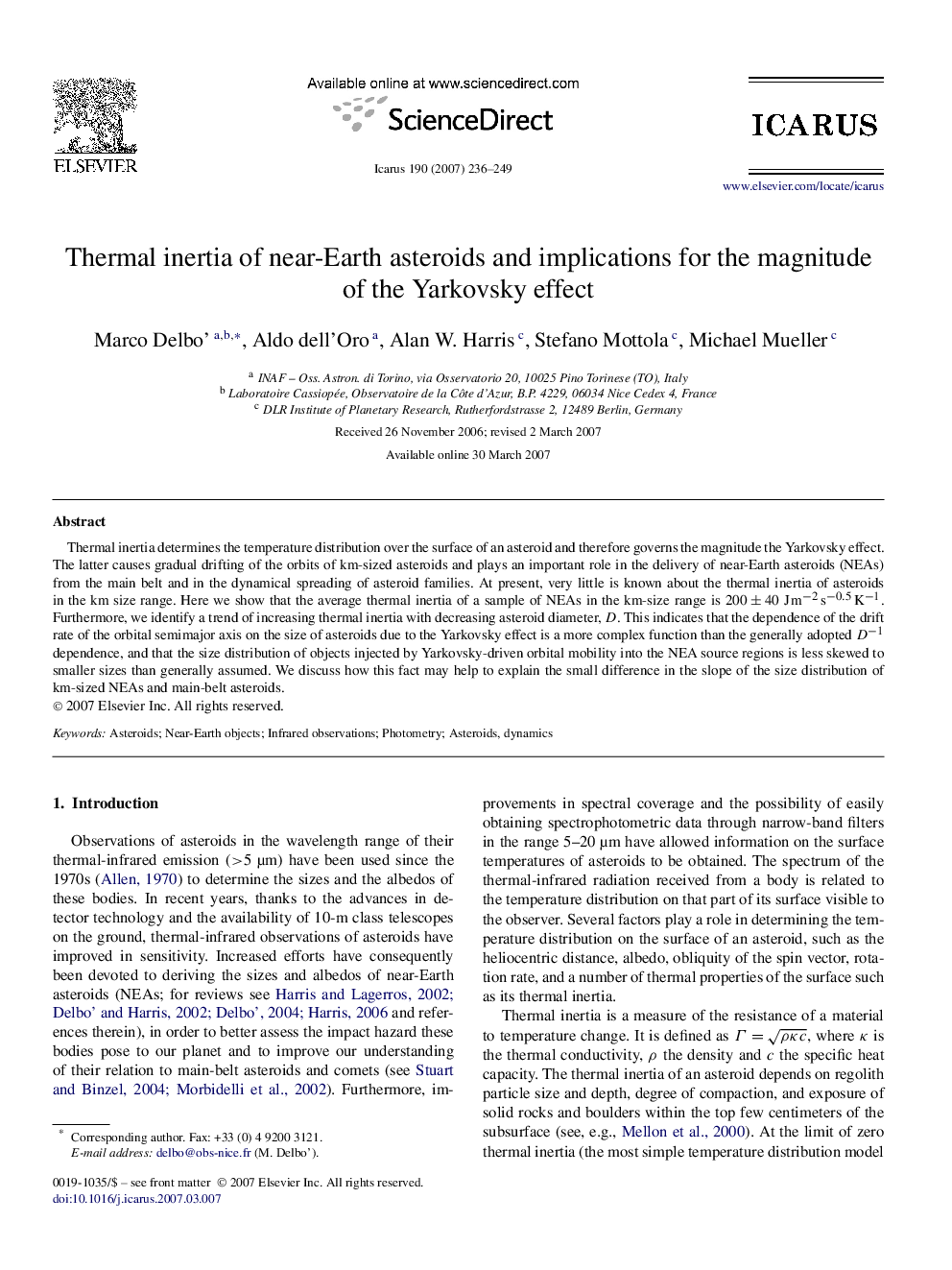| Article ID | Journal | Published Year | Pages | File Type |
|---|---|---|---|---|
| 1775596 | Icarus | 2007 | 14 Pages |
Thermal inertia determines the temperature distribution over the surface of an asteroid and therefore governs the magnitude the Yarkovsky effect. The latter causes gradual drifting of the orbits of km-sized asteroids and plays an important role in the delivery of near-Earth asteroids (NEAs) from the main belt and in the dynamical spreading of asteroid families. At present, very little is known about the thermal inertia of asteroids in the km size range. Here we show that the average thermal inertia of a sample of NEAs in the km-size range is 200±40 Jm−2s−0.5K−1. Furthermore, we identify a trend of increasing thermal inertia with decreasing asteroid diameter, D . This indicates that the dependence of the drift rate of the orbital semimajor axis on the size of asteroids due to the Yarkovsky effect is a more complex function than the generally adopted D−1D−1 dependence, and that the size distribution of objects injected by Yarkovsky-driven orbital mobility into the NEA source regions is less skewed to smaller sizes than generally assumed. We discuss how this fact may help to explain the small difference in the slope of the size distribution of km-sized NEAs and main-belt asteroids.
